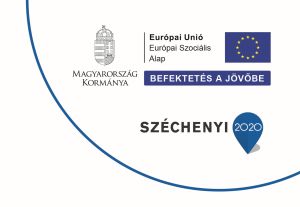Šteflová, Lucia (2024) Az 1831-es kolerajárvány hatása egyes evangélikus gyülekezetekre a Magyar Királyság északi területein Kelet-Közép-Európai Történelmi Tanulmányok (2/1.) : A városi jogállás peremén – Várostörténeti tanulmányok. 2 (1). pp. 175-190. ISSN 3004-0981
|
pdf
2_1_Šteflová Lucia.pdf Download (1MB) [error in script] |
Absztrakt (kivonat)
The Impact of the Cholera Epidemic in 1831 on Evangelical Congregations in the Northern Regions of the Kingdom of Hungary. The official church records provide only minimal insight into the impact of the cholera epidemic in 1831 on evangelical congregations. The minutes of canonical visitations, as well as the minutes from general and district conventions, lack detailed information that would enable us to reconstruct the situation in these congregations directly following the cholera outbreak in Hungary. In the protocols from the years immediately preceding the epidemic, even those written just a few months prior to the first reported case of the disease in Hungary, there are no regulations aimed at empowering evangelical priests to effectively mitigate the epidemic’s effects. This absence of records from 1831 may also reflect the initial restrained attitudes and mistrust of both secular and church officials toward early reports concerning the potential spread of a dangerous disease. T he protocols do not document the number of deaths attributed to cholera; only one protocol mentions that, as a result of the epidemic, the number of deaths in the Potis district exceeded the number of births by more than one-third. Regarding specific anti-cholera measures, the protocols from both the first and second halves of the 19th century contain very few references. Most often, they merely cite circulars or regulations that were apparently read aloud at assemblies and subsequently sent to the seniorates. However, one regulation concerning cholera is recorded in the protocol from the Potisky district, which pertains to the burial of cholera victims. It mandated that corpses be buried immediately and prohibited their transportation into or in front of the church. Displaying the deceased in a coffin was also forbidden. References to cholera are only partially mentioned in these official minutes, making it necessary to supplement these gaps with additional sources, such as period chronicles. One such chronicle is authored by the evangelical priest Andrej Čorba, who survived the cholera epidemic and provides a contemporary account of the events that significantly affected Hungary. Chronicles serve as invaluable sources of information, as they document events in a chronological sequence. They are relatively rare, primarily because they were often composed immediately following significant events, thereby capturing them in considerable detail. Another important source regarding the cholera epidemic of 1831 is the chronicle written by the evangelical priest Matej Rojek. His chronicle reflects the dire circumstances during the epidemic. In addition to describing the course of cholera’s spread and the introduction of measures, Rojek offers personal assessments and even ironic comments within his narrative. As an eyewitness to the events he describes, his chronicle possesses immense informative value, illustrating the now well-documented course and spread of cholera in Hungary.
| Mű típusa: | Folyóiratcikk - Journal article |
|---|---|
| Szerző: | Szerző neve Email MTMT azonosító ORCID azonosító Közreműködés Šteflová, Lucia NEM RÉSZLETEZETT NEM RÉSZLETEZETT NEM RÉSZLETEZETT Szerző |
| Megjegyzés: | A tanulmány az APVV–20–0613 Epidémie na území Slovenska v 17. – 19. storočí című projekt keretében jött létre. |
| Kapcsolódó URL-ek: | |
| Kulcsszavak: | cholera, chronicle, evangelical church, church choirs, Hungary, districts, anti–cholera measures, Matej Rojko, Andrej Čorba |
| Nyelv: | magyar |
| Kötetszám: | 2 |
| DOI azonosító: | 10.46438/ECEHS.2024.1.175 |
| ISSN: | 3004-0981 |
| Felhasználó: | Tibor Gál |
| Dátum: | 14 Jan 2025 09:49 |
| Utolsó módosítás: | 14 Jan 2025 09:49 |
| URI: | http://publikacio.uni-eszterhazy.hu/id/eprint/8372 |
 |
Tétel nézet |

